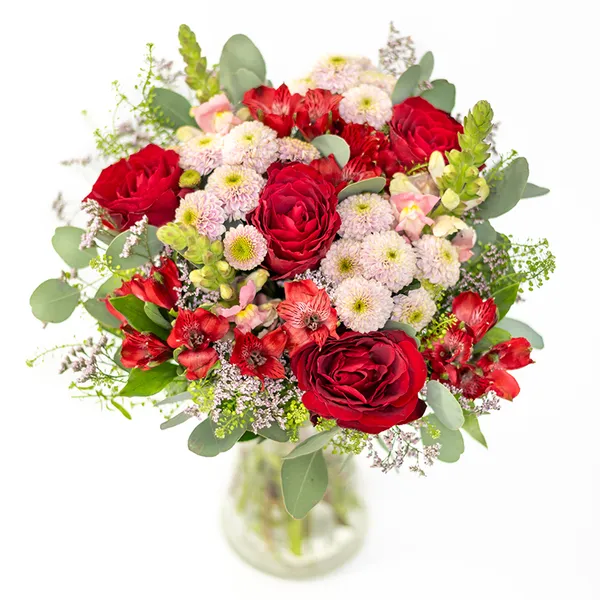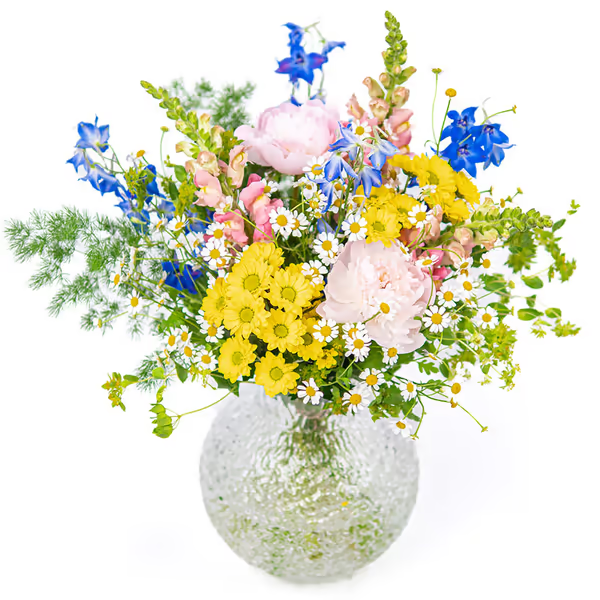Pistachio: The Subtle Bloomer of Prosperity and Patience
The pistachio tree (Pistacia vera) is best known for its delicious, buttery nuts—but before harvest, it puts on a modest floral display of tiny, clustered, red or greenish flowers. Native to Central Asia and the Middle East, this deciduous tree has been cultivated for over 3,000 years and symbolises abundance, resilience, wisdom, and patience. While not a typical cut flower, pistachio branches and foliage are sometimes used in floral design for their silvery tone and structural beauty.
COMMON NAME
Pistachio
BOTANICAL NAME
Pistacia vera
ORIGIN
Central Asia, Middle East
PEOPLE ALSO CALL IT
Green Almond Tree, Pistachio Nut Tree
FLOWERING TIME
Spring (March to May)
ASPECT
Full sun, hot dry climates, well-drained soil
SYMBOLISM
Prosperity, patience, wisdom, abundance, fertility
Care Tips for Pistachio in the Garden or Pot
Light: Needs full sun—at least 6–8 hours daily.
Soil: Thrives in well-drained, sandy or loamy soil, tolerant of poor soil conditions.
Watering: Drought-tolerant once established; water deeply but infrequently.
Pruning: Prune in winter to shape and remove dead wood.
Fertilisation: Apply low-nitrogen fertiliser in early spring.
Pollination: Pistachios are dioecious—you’ll need both a male and female tree for nut production.
Container growing: Only dwarf varieties; needs large pot, full sun, and winter protection in cooler climates.
Symbolism & Meaning
The pistachio tree is a symbol of abundance, endurance, and patience—since it takes up to 7 years to bear fruit, it's associated with delayed rewards and prosperity. In ancient Persia, it was regarded as a sacred tree, and the pistachio nut is still seen as a token of wealth and good fortune in many Middle Eastern cultures.
Types of Pistachio
‘Kerman’ – The most widely grown female cultivar in commercial production.
‘Peters’ or ‘Randy’ – Common male pollinators.
‘Siirt’ – A Turkish variety with slightly larger, creamier nuts.
‘Golden Hills’ – A newer, early-harvest cultivar with good nut quality.
Ornamental pistachio (Pistacia chinensis) – Grown for red autumn foliage, not nuts.
Frequently Asked Questions About Pistachio
Pistachio trees (Pistacia vera) grow best in hot, dry climates with long, warm summers and mild winters. They are native to regions like Iran, Turkey, Afghanistan, and are now also cultivated in southern Europe — especially in Italy (Sicily), Greece, and Spain. In cooler climates, they struggle to produce nuts.
Pistachio trees bloom in early spring, usually around March or April, depending on climate. The flowers are small, greenish, and unshowy, and male and female flowers grow on separate trees – so you need both for fruit production.
Pistachio trees are not fully winter-hardy. They can tolerate short periods of light frost, but temperatures below –10 °C can damage or kill the tree, especially young ones. In Central and Northern Europe, they need winter protection or a sheltered spot, ideally in a pot you can move indoors in winter.



